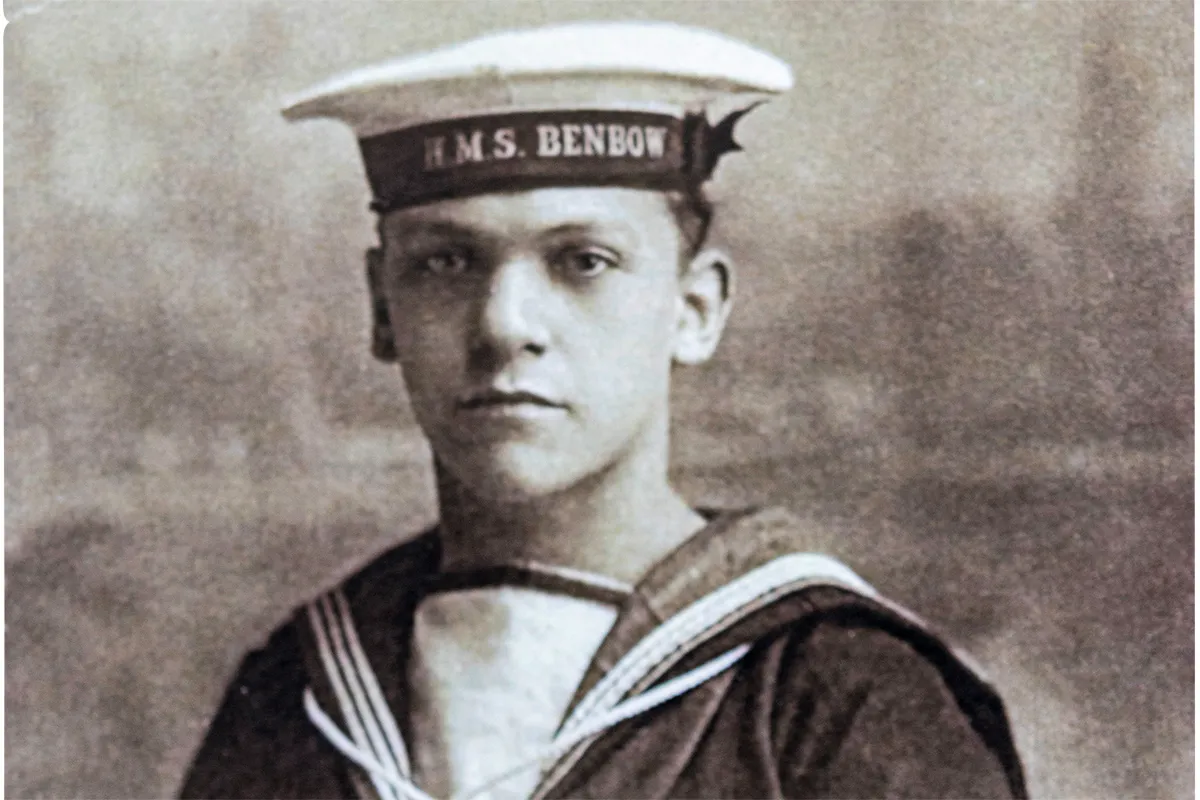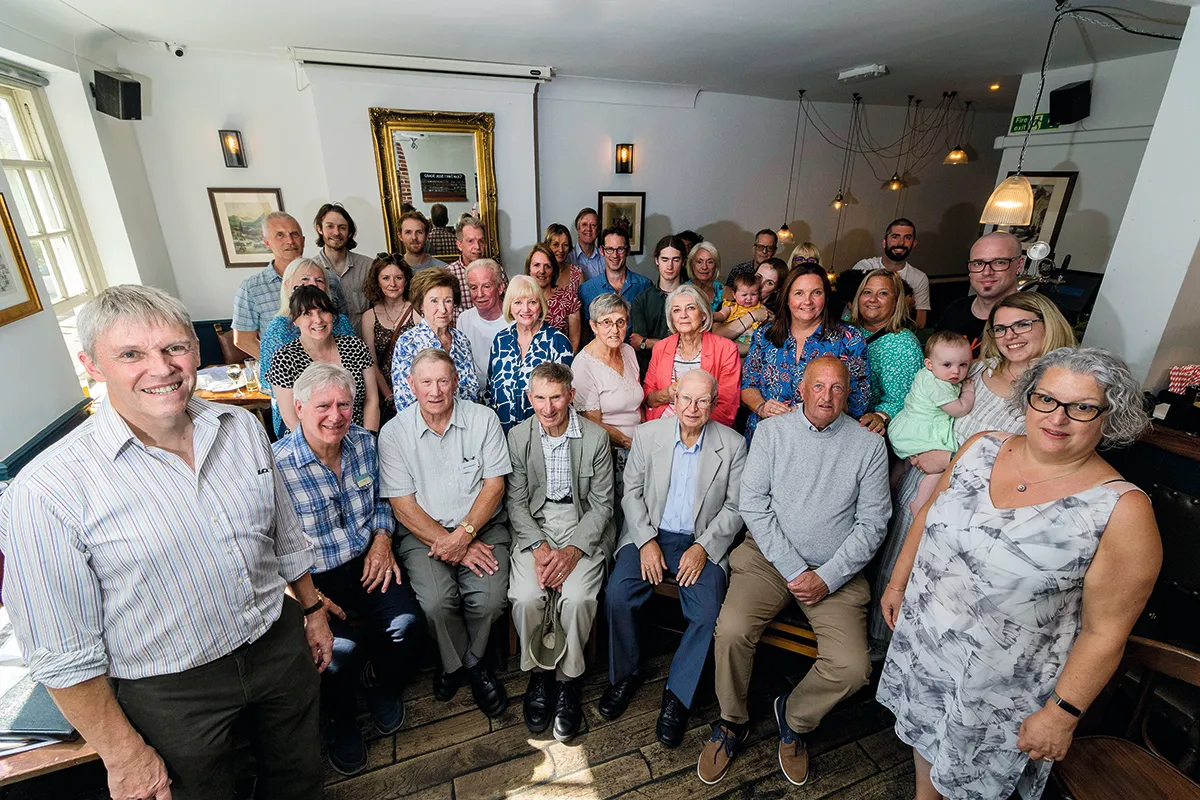Family folklore can resonate through the generations, and Jennie Long, a genealogist from Stoke Newington in Hackney, North-East London, has a striking example. She vividly remembers being told an emotive story by her dad Eddie when she was growing up.
“We used to cross Tower Bridge in the car to visit my gran, who lived in Bellingham, Lewisham, South-East London,” Jennie explains. “One day as we did so, Dad told me that one of his uncles drowned in the Thames and that his father had warned him to avoid the river.
“The tale of the lost uncle was in the back of my mind when I began researching Dad’s tree in 2008. I traced the Long family through my paternal grandfather Harry, who was born in Bethnal Green in 1902.
“His parents were Albert and Hannah Long, who had 10 children, eight of them boys. These were my dad’s uncles, but I didn’t know the name of the relative who had died in the Thames.”
Jennie began researching all of the Long children. “George Long, born in 1911, was the only family member who I couldn’t trace into adulthood. Unless there was a child whose birth I hadn’t found, George had to be the brother who drowned.”

Knowing that the family lived in Camberwell, Southwark, in the 1920s, Jennie began searching the General Register Office indexes. She found the death entry for a George Long, age 11, registered in St Olave’s, Southwark.
“I ordered the death certificate, which confirmed that George was the son of Albert and Hannah Long, and that he had drowned while swimming off Horselydown Stairs, near Butler’s Wharf. I began to wonder what the story was behind the tragedy.”
Jennie noticed tiny handwriting on the certificate recording that an inquest into George’s death had taken place. “The mention of an inquest is always exciting for family historians, because there’s a chance that it will have been reported in the newspapers.
“This was in 2008 and many old newspapers were not yet digitised, so I had to scan through microfiche editions at Southwark Archives. It became apparent that drownings in the Thames were far from unusual, and they generally received only passing mention. I was astonished, therefore, to find a lengthy report of the inquest and funeral in several newspapers, including the South London Press. The discovery was a spine-tingling moment.”
"The discovery was a spine-tingling moment"
George had been one of a group of boys playing by Horselydown Stairs on 3 August 1922. This was on the south side of the Thames, by Tower Bridge.
The boys were spotted by Albert Garlick, a watchman on the Kestrel, a Thames barge moored close to the wharf. At the inquest, Garlick stated that the tide was running strongly. When George jumped in, he found himself out of his depth almost immediately.
Although he could swim, the current carried George away from the shore in the direction of the Kestrel. A 22-year-old bargeman called Edgar Cheesman threw off his shoes and dived into the water.

Edgar was a strong swimmer and managed to reach George twice, but the current tore them apart. Unable to do more, Edgar turned back towards the barge. His colleagues threw him a rope, but he was unable to catch it.
A flotilla of boats joined the rescue attempt, but by this time Edgar and George had disappeared under the barge. Their bodies were recovered when the Thames Division Police dragged the river by the bridge.
“Until I read the newspaper report, I didn’t know that Edgar Cheesman had jumped into the Thames to try to rescue George. This came as a huge surprise. It was very difficult to read of the double tragedy, and I felt so moved by Edgar’s heroic efforts.”
"I felt so moved by Edgar’s heroic efforts"
At the inquest, George’s father expressed his deep gratitude for Edgar’s bravery. The deputy coroner recommended that the case be brought to the attention of the Carnegie Hero Fund Trust.
Since its inception, the fund has recognised 6,000 individuals for bravery. It granted the Cheesman family £1 a week for a year, and included Edgar’s name in its ‘Roll of Heroes & Heroines’.
“The story didn’t end there. Several newspapers published vivid and detailed accounts of George and Edgar’s joint funeral. The tragedy resonated throughout the community who lived around Bermondsey’s dock, where the Cheesmans were well known.”
"The tragedy resonated throughout the community who lived around Bermondsey’s dock"
Edgar lived with his parents and siblings at 26 Curlew Street, which led directly onto the Thames near Horselydown Stairs. “On the day of the funeral, Edgar’s cortège left his home and wound its way among the wharves. A great concourse of people joined the procession as a mark of respect.
“The cortège then proceeded to the Longs’ home in Camberwell, and both coffins were taken to Nunhead Cemetery in Southwark. Edgar and George were laid to rest in the same grave.
“All four Cheesman brothers and four Long brothers were pallbearers, with two from each family to each coffin. Presumably my grandfather, Harry, who was 21 at the time, was one of them.
“It was very touching to read of how the two families came together that day, united in grief. Both had lost a child, and were now inextricably linked.”
“It was very touching to read of how the two families came together that day, united in grief"
Jennie decided to build a tree on Ancestry for Edgar, to find out more about the family. He already appeared on a couple of trees, but she uncovered little more information.
“A few years later, I was chatting to a cousin about the tragedy and she remarked that the centenary wasn’t far off. That got me thinking: if we were going to mark this occasion for our family, then it really ought to involve the Cheesmans as well.”
Jennie researched Edgar’s family again and found more contacts, including Steve Fowler, Edgar’s great nephew. “I decided to plan a get-together in London and reunite the Long and Cheesman families,” she says. “I also wanted to honour Edgar’s bravery, because he’s a hero to me.”
Jennie got in touch with Steve, who was delighted to take part.
“I’ve known the story of Edgar for as long as I can remember,” Steve explains. “He was born in Bermondsey, South-East London, in 1899, and his parents were Oliver and Clara Cheesman. He had 11 siblings, including my grandmother, Kate, and was known in the family as ‘Tom’.
“On his 18th birthday in 1917, Edgar joined the Royal Navy and served on HMS Benbow. This battleship escorted fleets of merchant vessels, protecting them from U-boats. After being demobbed, he worked as a lighterman on Thames barges.
“The family kept Edgar’s memory alive, and often spoke of his selflessness. I remember Kate saying, ‘Everybody loved Tom – he was everybody’s favourite.’ Two of his nephews were named after him, and my father Eric was given the second name Thomas, after his family name.”
“The family kept Edgar’s memory alive, and often spoke of his selflessness"
He adds, “It’s a fitting gesture to remember both Edgar and George. Well done to Jennie for being the inspiration behind it.”
Jennie and her family met Steve and the Cheesmans for the first time on Saturday 6 August at The Dean Swift Pub, near Butler’s Wharf. The venue dates back to Victorian times, and Edgar’s family may well have drank there.
The reunion lived up to everyone’s hopes. “We had 35 adults and two babies in attendance: nine from the Long side, and 26 from the Cheesman side – four generations including the babies,” she reveals.

“Steve and I made welcome speeches explaining what the lives of our families would have been like in working-class Bermondsey and Camberwell in the early 20th century, what happened in 1922, and our research into our trees. The speeches were recorded so they could be shared with relations who couldn’t attend.”
After the speeches there was a buffet lunch, and the chance to socialise and share photographs, documents and family stories. Most of the attendees also paid a visit to Curlew Street and Horselydown Stairs, guided by a walking map that Steve had prepared. There is a little beach and the tide was low, so people could go down to the riverside.
Steve says that the last guests left the pub around 7pm, adding, “The atmosphere was really positive, and members of both families engaged enthusiastically.”
“It seemed natural for the families to reunite and mark the anniversary,” Jennie concludes. “Edgar’s bravery is the reason why we know so much of George’s story. The day proved to be a lovely and memorable occasion for both families, and very joyful despite the sadness of the event that inspired it.”